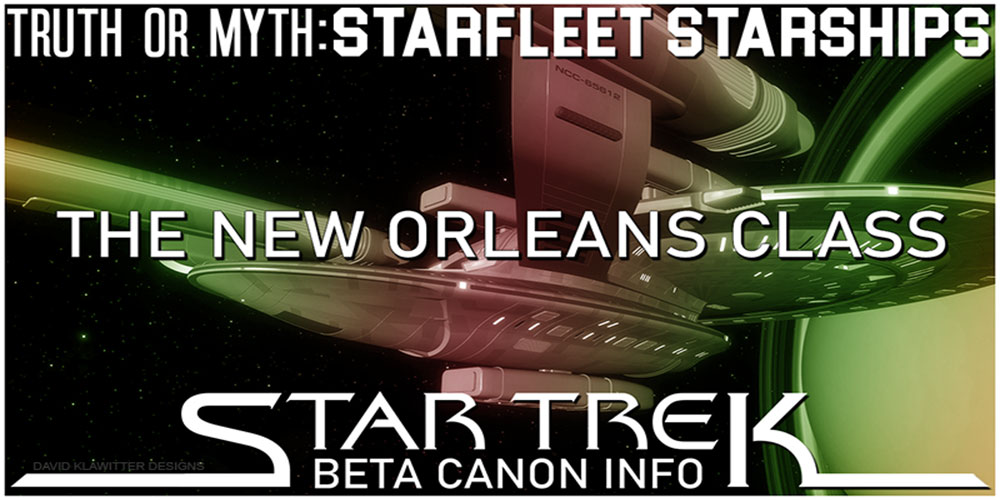Hello and welcome to another episode of Truth OR Myth Beta Canon, a Star Trek web series that dives into the history of any given topic using Beta Canon sources and my imagination to fill in the gaps. In today’s episode we’re looking at the New Orleans Class, as first seen in Star Trek: The Next Generation, to better understand its place in Star Trek History.
As always, because this IS a Beta Canon video, all information re-laid should pretty much be taken with a grain of stardust, and only considered a little bit of Star Trek Fun! And so, with all that out of the way, let’s begin.
The first class was constructed in a new line of Starship Classes; the New Orleans Class would be a testbed for all the brand new Isolinear Based Technology. But what do we know about this experimental class, let’s find out…?
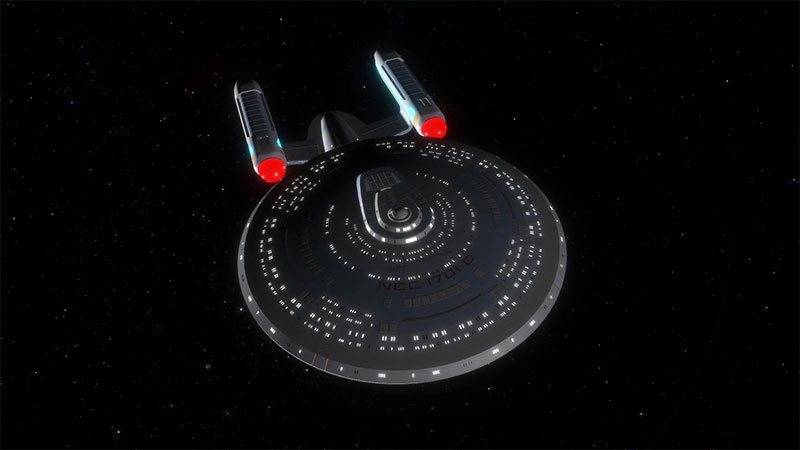
The Ambassador Class was a complete failure.
In an attempt to create a class to replace the ageing Excelsior Class, Starfleet’s best and brightest had decided to push Duotronic Technology far beyond its theoretical limits, and this decision ended up being a disastrous one.
Put simply, the Ambassador Class didn’t work, the computer control systems, simply couldn’t handle starships more advanced technologies causing system-wide failures from the moment the USS Ambassador left space dock, forcing the starship back into Drydock before her shake-down cruise had truly begun.
Meanwhile, the Daystrom Institute, a leader in innovative new technology creations, had approached Starfleet Command with their newest breakthrough which they called Isolinear Technology.
Isolinear Tech was as far above Duotronic Technology, as Duotronics had been above the Computer Control circuitry used in Starfleet’s first starship classes, truly a remarkable evolution.
With the Ambassador Classes launch put on indefinite hold while its starship designers tried to solve its technical issues, Starfleet Command would ask the Daystrom institute to take a look at the class and see if they could incorporate this new Isolinear Technology into that design, potentially solving all the Ambassador Classes problems.
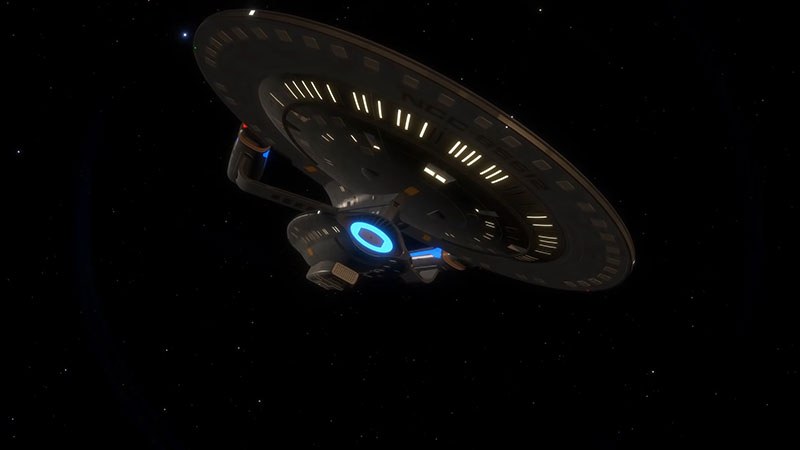
After 6 months of redesigning many of its systems, the Ambassador Class would undergo a special refit, having its computer core replaced with a hybrid Duotronic/ Isolinear model which the Daystrom Institute felt, would successfully solve the classes issues.
Creation and replacement of all the components needed within the class were slow going, as a lot of the Ambassador Classes systems would be developed on the fly.
But by 2325, the Ambassador Class was finally ready to try another shake-down cruise, and this time, she performed way above Starfleet’s expectations.
As a result, Starfleet would commission the class to head into limited production.
The entire Ambassador Class debacle had been a huge embarrassment to Starfleet Command, citizens throughout the Federation, wondering exactly how Starfleet had gotten so many things, so wrong about the class.
In an attempt to reaffirm faith in the design, Starfleet Command would even commission the Enterprise C to be a part of that class, for the most part, the Ambassador Class embarrassment would fade into the void of deep space.
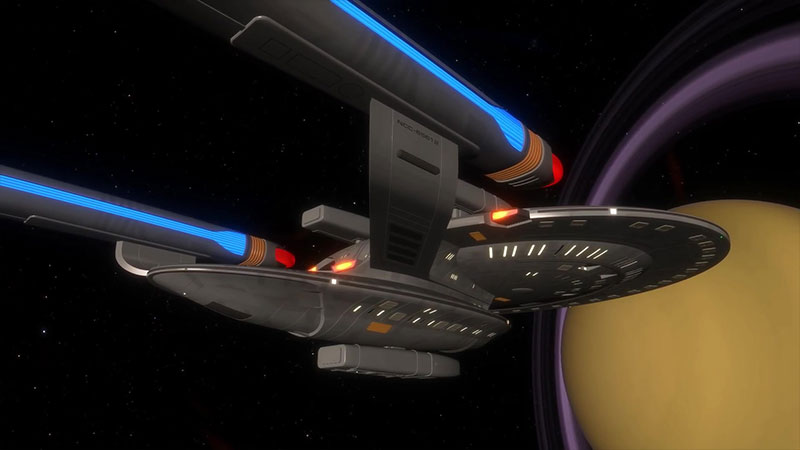
But Starfleet Command now had a new idea.
Isolinear technology provided Starfleet with an opportunity to create larger, faster, and stronger starship classes the likes of which no one had seen before.
Due to the Ambassador Classes hybrid Duotronic/Isolinear technology, the true potential of Isolinear Tech was yet to be unlocked.
So, Starfleet would commission Project Galaxy, a project created to redesign and redefine Starfleet’s entire fleet to lead the federation through to the 25th century.
Starfleet Command would create several teams, with each being in charge of developing a special new class based on the Isolinear technology, with the jewel of Project Galaxy being the Galaxy Class itself, an immense starship design intended to be a powerhouse as well as a self-sustaining city in space.
But before that classes’ construction would even begin, Starfleet needed a testbed for all the new technology.
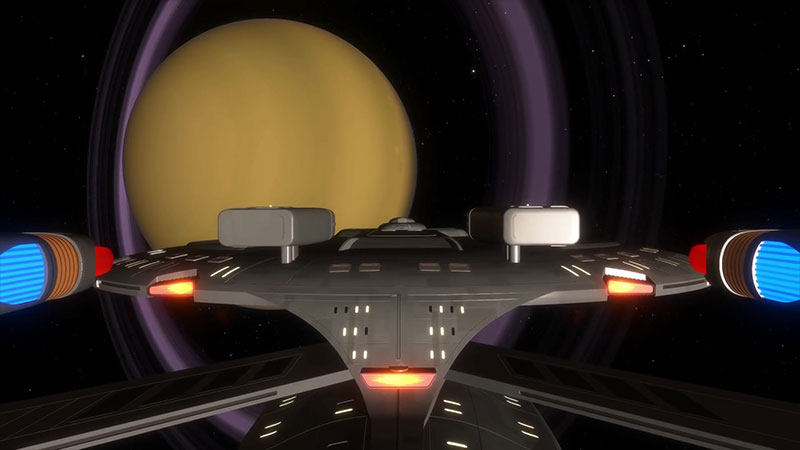
First, it was suggested to simply redesign the Ambassador Class from the ground up, which would eventually lead to the Narendra Class being commissioned.
But at this point for Starfleet, they wanted to distance themselves from the Ambassador Class as much as possible.
And so, the race was on, with Starfleet waiting for the first Project Galaxy design to be completed. The first class off the drawing board would be the New Orleans Class, a perfect testbed for Project Galaxy Technology.
Sitting at a length of 345 meters, and 19 decks tall, the New Orleans class would be designed to operate by 550 officers and crew members.
Every system within the New Orleans Class had been redesigned to function with Isolinear Technology.
A brand new style of Warp Core would be included in this design, providing this class with a standard safe cruising of warp factor 6 and an emergency maximum speed of warp factor 9.3 sustainable for 12 hours a time.
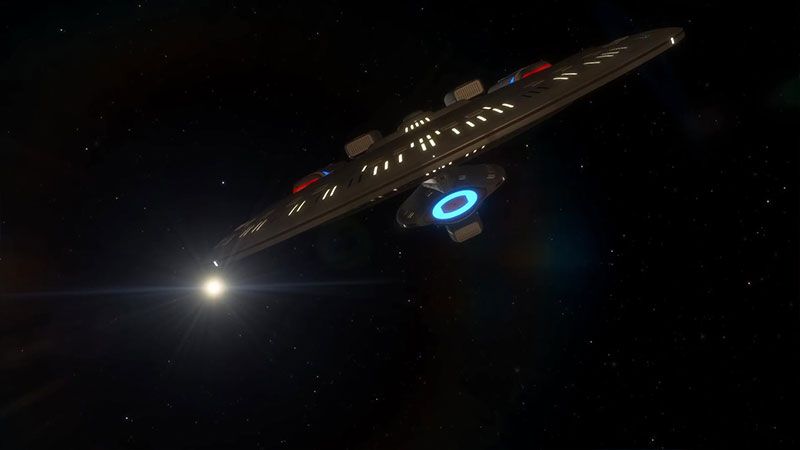
The New Orleans Class would also expand upon the new Phaser Array technology first used in the Ambassador Class.
Not only were these arrays far more efficient than Phaser Emitter Banks, but they also supplied greater power output than could ever be expected from that older system. 3 Photon Torpedo Launchers, 2 forward and 1 aft, would also be included in this design.
Defensive Shielding would also receive a major upgrade, increasing their effectiveness by over 57% as compared to the aforementioned Ambassador Class.
Another large difference in the New Orleans Class was the approach to comfort that all Project Galaxy Starships would undertake.
Isolinear Technology as a whole was much smaller than its Duotronic Counterparts, which meant a lot more space could be devoted to comfort and special amenities not usually seen aboard Starfleet Starships.
Starfleet wanted all classes of Project Galaxy to be seen as luxurious, as they wanted to encourage enlistment in the fleet, by being able to include officers’ families onboard these classes.
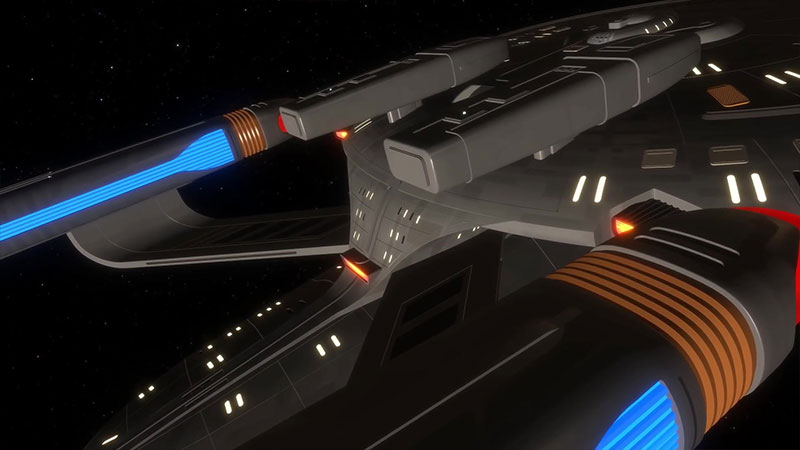
The New Orleans Class had four uprated personnel transporters, four emergency transporters and four cargo transporters.
This class also had 3 mission profile-specific pods attached to it, 2 on the saucer section and 1 below the secondary hull, the standard pods attached to the class, were sensor pods, capable of intense and rather long-ranged scans.
The intention was to create various other pods which could be attached or detached at will, though this intention never did materialize, with Starfleet Command merely keeping the sensor pods on all ships of the class, as they had proved themselves invaluable when it came to information gathering.
The Classes Shuttlebay would be located in the primary hull, something quite different than most Starfleet Vessels of the time, and would include a variety of auxiliary spacecraft, also completely redesigned for this new Era of Starfleet Aesthetics.
The USS New Orleans would launch in late 2327, with mixed results.
During the first Warp tests, problems cropped up with the power transfer system and the Structural Integrity Field systems, requiring the starship to cut its shake-down cruise short and return to Spacedock.
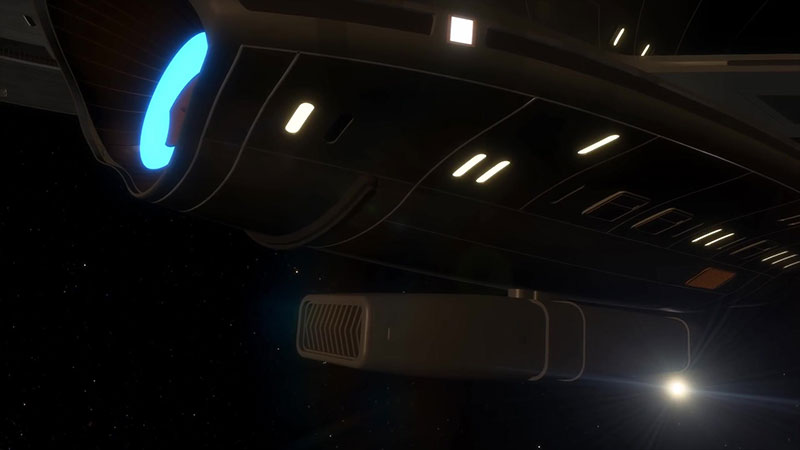
Thankfully, Starfleet had not made the launch of the New Orleans public knowledge, learning their lesson from the recent Ambassador Class trials, and this allowed them to further develop the class until they felt it was ready for unveiling.
Testing, redesigning, even more testing, and redesigns would plague this class until finally in 2336, The USS New Orleans was considered space worthy and unveiled to the entire Federation with much excitement and applause.
And with everything learned from this class, the construction and development of all other Project Galaxy Starship Designs would go much smoother than that of the New Orleans Design.
However oddly, after the successful launch of the Class, Starfleet would not at once put this class into full production, only ordering 5 more of the class at the time to be constructed.
Though no official records exist to explain this decision, it’s generally believed that Starfleet wanted to hold back on full construction of the class, until more designs were completed.
This would allow Starfleet to develop technologies and apply what they would learn in other classes, to all Project Galaxy Starship Designs also further.
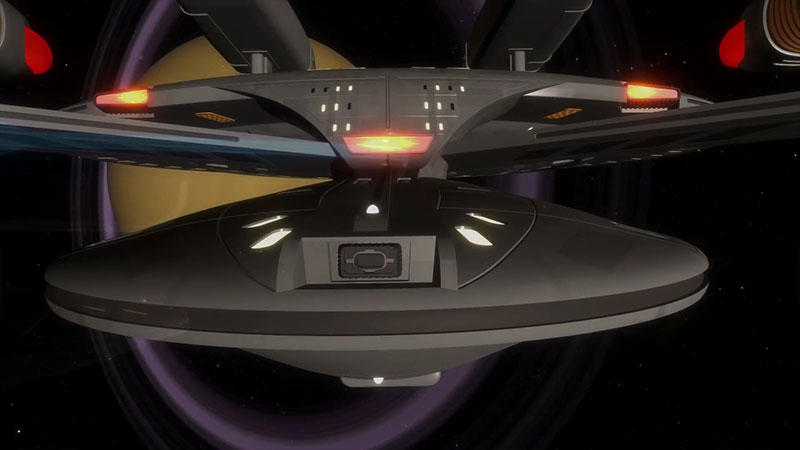
As a result, however, the New Orleans Class would not enter full production until the early 2350s, with several updates being included in the class at that time.
The New Orleans Class would see itself engage in mostly patrol and reconnaissance duties.
Starship of the Class, like the USS Rutledge, would become heroes of sorts to the Federation public, after several successful engagements during the first Federation/ Cardassian War.
Thanks to its improved Sensor Technology, many tragedies would be averted, with the Cardassian Union never truly being able to gain the upper hand against the Federation.
Almost entirely thanks to the New Orleans Class, the Federation and its citizen would come to see this first war, as little more than a series of annoying skirmishes, a mistake they would pay dearly for in the latter 24th century.
By the time of the Galaxy Classes launch, the New Orleans class was seen as a stable and valuable addition to the fleet.
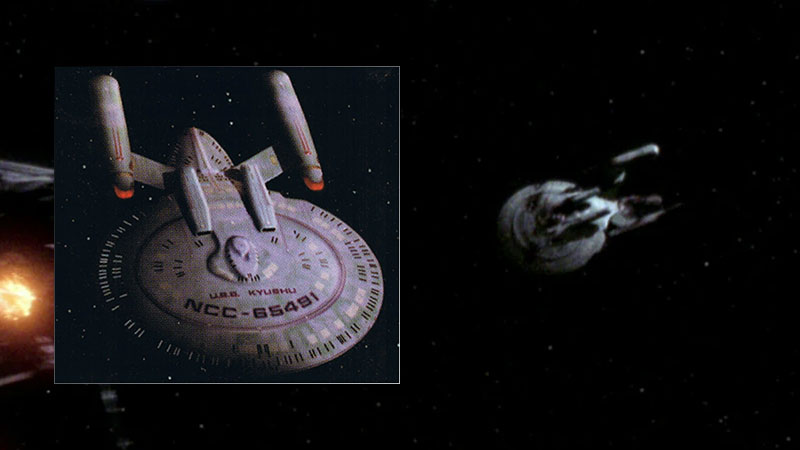
But after the events of Wolf 359, all the Project Galaxy Classes would come into question. And shortly thereafter, construction on most designs, including the New Orleans class, would come to an abrupt halt, when Starfleet Command and the Federation Council conducted a complete review of all starship classes.
This review, however, would not spell the end of the New Orleans Class, as all existing starships constructed, would receive a major refit to conform with all the new technological breakthroughs Starfleet had made to prepare for the future Borg encounters.
But construction of new vessels of this class would never resume, in fact by the 2390s, the remaining vessels of this class would slowly begin to be decommissioned in favour of the newer aesthetics that would lead Starfleet into the 25th century.
An important step in Project Galaxy, the New Orleans class would make a name for itself during the First Cardassian/ Federation War, only to become a distant memory after the Battle of Wolf 359.
Nevertheless, the New Orleans Class would serve the Federation with distinction and honour, earning this class its well-deserved place, in Starfleet History…
What to help the channel keep its sensors trained on its enemies? Then just click HERE to become a channel Patron…
Watch The Latest Truth Or Myth Below
Thank you for watching today’s episode of Truth or Myth Beta Canon, what do you think of the New Orleans Class, and the historical narrative that I’ve created here.
Do you want to see more videos like this one? Well leave your comments in the section below and don’t forget to like the video and subscribe to the channel.
Thanks again for watching, Live long and prosper…

